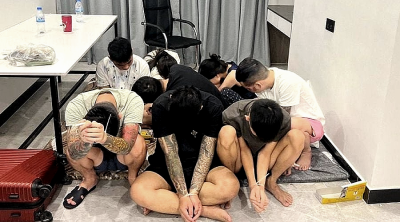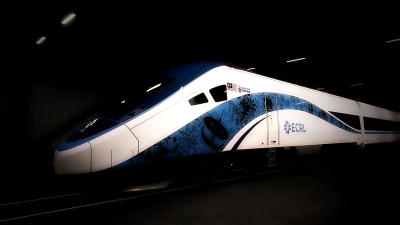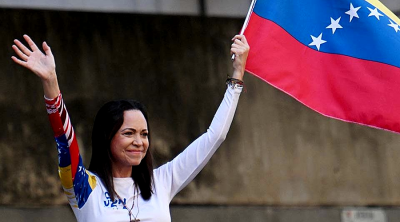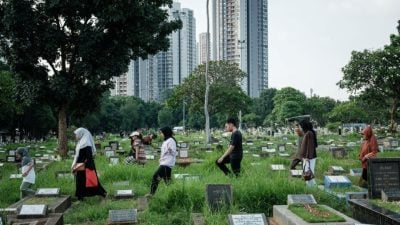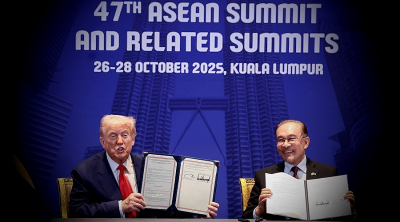The pace of urbanization in Asia is outrunning efforts by national and local governments to improve urban public transport.
As such, it is becoming increasingly necessary to rethink Asia’s public passenger transportation needs.
With the post-pandemic recovery in full swing, public transport ridership is gradually increasing again, even if many cities are still way behind pre-COVID levels.
Asean faces multiple challenges in ensuring accessibility, enhancing sustainability, and providing high-quality mobility services.
As we move toward a zero-carbon economy, reducing emissions, energy consumption, congestion, and pollution must be factored into policy decisions.
In the face of external threats and disruptions, such as high energy prices, a resilient transport system is needed to anticipate opportunities and manage the changes in demand and usage patterns.
While most transport systems are well-equipped in their sustainability strategies and have initiatives that improve transport efficiency and its resilience; they should look at their sustainability, efficiency, and resilience from a holistic and integrated lens.
Transport systems and companies are now being inclusive and socially geared to meeting society’s access and development needs while minimizing the impact on human and environmental health.
Many have already started or are working to reduce their carbon footprint and create more long-term value as passengers, regulators and governments demand more sustainable mobility.
Moreover, transport systems and companies are working toward being able to deliver the output required with reduced or minimal expenditure, resource consumption, and use of human capital.
However, efficiency goals are further complicated by transportation systems typically being asset-and energy-intensive, and with many companies having an aging asset base with significant capital budgets required to maintain or replace them.
In addition, resilient transport companies must be able to anticipate opportunities and threats to ensure they can survive rapid changes in demand and use patterns and continue operating in the face of multiple threats and disruptions, such as extreme weather, collapse of key supply chains and energy supplies, loss of service, or incidents.
The COVID-19 pandemic and ongoing recovery have highlighted the importance of resilience.
Transport companies and operators are not new to risk management, but the path to building back better can be achieved by matching supply with uncertain demand, balancing and reinforcing sustainability and efficiency, and rethinking business and operating models.
By matching supply with uncertain demand, transport companies can adapt offerings and pricing to changing travel patterns and provide flexibility in offerings to cope with the uncertainty of demand.
In densely populated cities like Manila, the focus has been on connecting public infrastructure with transit and transport.
In 2023, the budget for modernizing the country’s railway network was raised to almost US$2 billion, reflecting the government’s commitment to developing a fast, efficient, and easily accessible transport system that helps curb congestion and reduce pollution.
The Philippines government’s recent investment in the railway network is just an extension of its ongoing efforts to develop a reliable public transportation system for commuters and ease road traffic congestion.
In May 2020, the Epifanio Delos Santos Avenue (EDSA) Busway Project, a joint undertaking by the Department of Transport (DoTR), Department of Public Works and Highways (DPWH), and Metro Manila Development Authority (MMDA), was launched to provide more efficient transportation systems in a limited access circumferential highway in the city.
The busway project features a dedicated lane for buses with stations, allowing for smoother travel by avoiding conflict with connecting streets, driveways, commercial centers, and curbside drop-off points.
In October 2022, the DoTR also announced that it would be starting work on constructing three busway concourses to help provide further accessible and convenient access to commuters.

Transport companies and systems can also set up the right governance toward carbon-zero ambitions, while at the same time managing costs and resilience and taking the opportunity to change travel patterns and to rethink and innovate.
For example, Jakarta has been shifting from a car-oriented city to focusing on Transit Oriented Development (TOD) since 2017, prioritizing mass transit and active mobility over private vehicles.
Developing a sustainable transport network to serve a city of 10 million people and a greater metropolitan area of more than 30 million might seem daunting, but Jakarta is the first Southeast Asian city to win the Sustainable Transport Award for its integrated public transportation system.
Transjakarta also developed Jak Lingko in 2018, an integrated scheme incorporating universal ticketing for paratransit service into the Transjakarta system to increase efficiency.
This scheme has not only enabled seamless mobility between Transjakarta, MRT Jakarta, LRT Jakarta, and state government-operated commuter trains but also improved pedestrian access to the stations.
Moving forward, the city is looking to continue expanding its integration plans so that public transportation service providers are all integrated under one institution.
Despite the pandemic, sustainable transport development in Jakarta did not slow down, and public transport remained resilient in ensuring commuters in Jakarta could depend on the system.
School buses that were not in use during this period were instead used as an alternative to commuter trains and helped in reducing congestion in train stations.
1,000 electric buses are also expected to be deployed in 2023 and push policies are being implemented to ease congestion and carbon emissions.
The evolution of mobility patterns since the COVID-19 pandemic has also created the need for transport companies and systems to rethink their business and operating models.
Transport operators are now looking to see how best to fund their projects, be it through public funding or revenue diversification, while at the same time finding the optimal outcome and operating model that works best for more integrated and resilient mobility ecosystems.
While a pared-down supply chain with high dependence on a small number of sustainable suppliers may help deliver efficiency and sustainability, it also exposes the organization to single points of supply chain failure.
This is evident in many high-speed railway systems where their rolling stock and signaling systems are sourced in totality from a single supplier to ensure interoperability, an instance where sustainability and efficiency can block resilience.
Meanwhile, sustainability and resilience can overpower efficiency where multiple renewable energy sources are utilized to increase diversity and reduce dependence on the unstable oil market. This, however, is expensive to operate.
Whereas in the case of MRT systems, building a new line above ground is cheaper and increases resilience by expanding operations to a new profitable area instead of building through tunnels, but the construction will cause significant environmental damage and disrupts communities.
That said, sustainability, efficiency and resilience are three often competing areas but identifying areas of mutual benefit can maximize the positive impact on businesses.
As governments and transport operators continue to build back better through increased sustainability, efficiency and resilience, there is a need for the development of strong, holistic, and cross-functional arrangements between governments and the private sector to drive and oversee progress toward such mobility systems.
These arrangements will require clear settings of references, roles, and responsibilities to ensure growth and continuity.
(Daniel Chow is Principal of Arthur D. Little Southeast Asia; Yuma Ito is Partner and Head of Arthur D. Little Singapore.)
ADVERTISEMENT
ADVERTISEMENT






